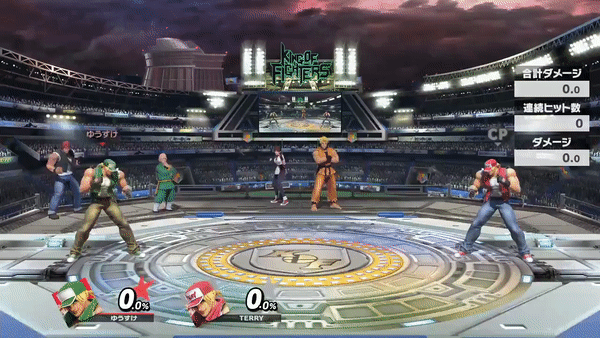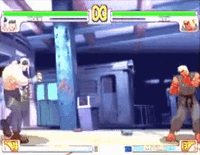User:The Other Jared/Charge partitioning: Difference between revisions
mNo edit summary |
m (→External links) Tag: Mobile edit |
||
| Line 16: | Line 16: | ||
Charge partitioning has existed in fighting games since around the time of ''Street Fighter III'' and ''Fatal Fury''. However, it has since been adopted by some fighting games to make charge inputs easier to do, though it is sometimes confused with charge [[buffer]]ing. It's typically very difficult to do, with small frame windows. Compared to many other fighting games, ''Ultimate''{{'}}s iteration of charge partitioning is considerably easier to perform. | Charge partitioning has existed in fighting games since around the time of ''Street Fighter III'' and ''Fatal Fury''. However, it has since been adopted by some fighting games to make charge inputs easier to do, though it is sometimes confused with charge [[buffer]]ing. It's typically very difficult to do, with small frame windows. Compared to many other fighting games, ''Ultimate''{{'}}s iteration of charge partitioning is considerably easier to perform. | ||
==External | ==External links== | ||
* [https://youtu.be/Hy5qvW3geWE GimR's video on Rising Tackle] | * [https://youtu.be/Hy5qvW3geWE GimR's video on Rising Tackle] | ||
Revision as of 00:14, September 14, 2020

Charge partitioning is an advanced technique exclusive to Terry's Rising Tackle in Super Smash Bros. Ultimate. This technique allows Terry to store the charge for a charged Rising Tackle in sections, thus the term "partitioning".
How to perform
The charge for Rising Tackle requires 24 frames to be stored. However, this charge time is very lenient; when down is released, there is an 11 frame leeway to continue charging, and a 9 frame leeway to perform the move. Within this leeway time, other actions (such as walking or jumping) can be taken, and the charge will be resumed as long as down is pressed again in time. Down can also be held during certain actions, such as dashing, which counts toward the charge. As such, this allows for storing the charged Rising Tackle over a longer span of time without leaving Terry vulnerable. It is considered simpler to perform on a SmashBox, due to easier access to downward inputs.
Utility
Generally, charge partitioning allows Rising Tackle to be an excellent option against jump-ins in the neutral game, though it is committal. It is also one of the most effective ways to use a charged Rising Tackle out of shield. Without having to use shield tilting while waiting 24 frames for the charge to store, the move becomes very powerful. This allows Terry to potentially KO opponents for merely touching his shield. Using charge partitioning alongside DI and SDI can also allow Terry to punish ladder combos with extreme potency.
Charge partitioning is also used to enable combos, particularly alongside neutral attack's first and second hits. This allows for Terry to get a much more consistent jab combo rather than with Power Dunk, which is notoriously inconsistent due to SDI. Mixing these up is popular in competitive play to score KOs more easily.
Charge partitioning also works excellently alongside command orientation input locking (COIL)[2][3] to make a charged Rising Tackle more reliable for recovery.
Origin
Charge partitioning has existed in fighting games since around the time of Street Fighter III and Fatal Fury. However, it has since been adopted by some fighting games to make charge inputs easier to do, though it is sometimes confused with charge buffering. It's typically very difficult to do, with small frame windows. Compared to many other fighting games, Ultimate's iteration of charge partitioning is considerably easier to perform.
